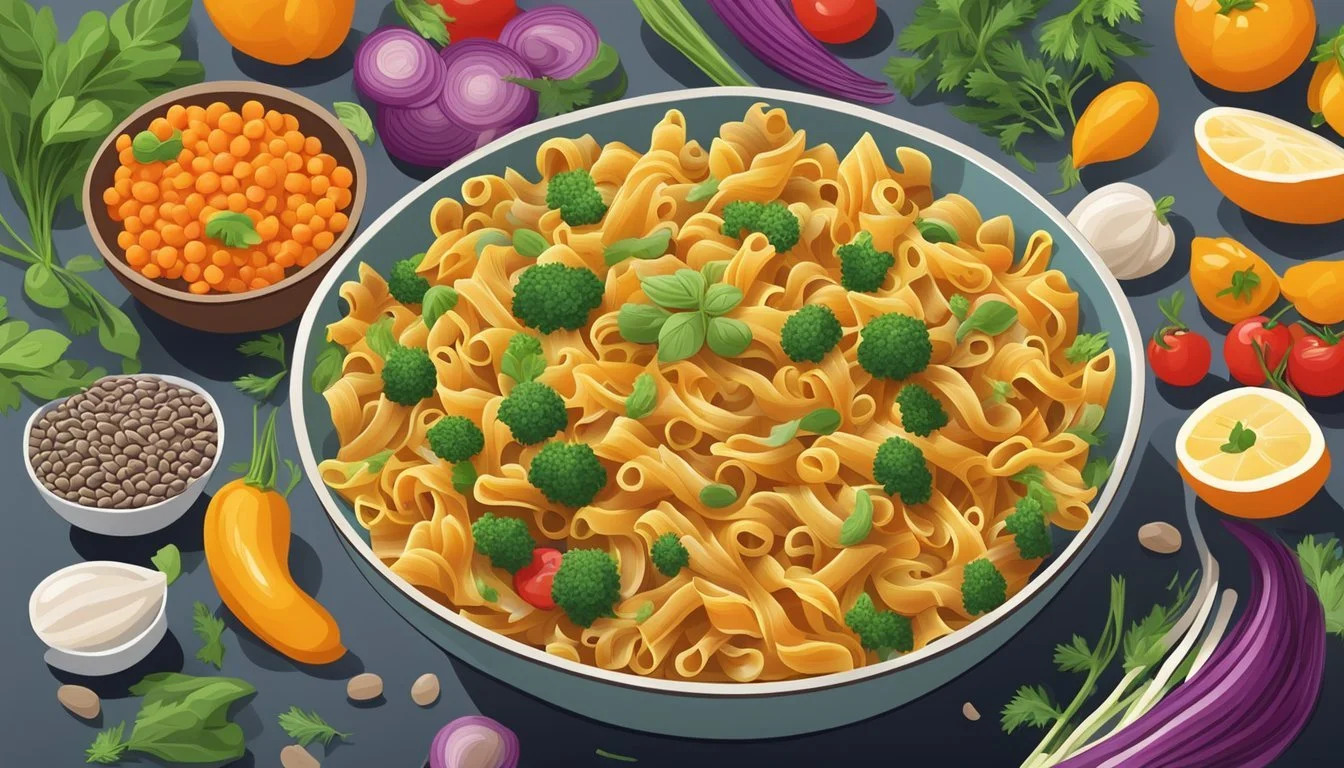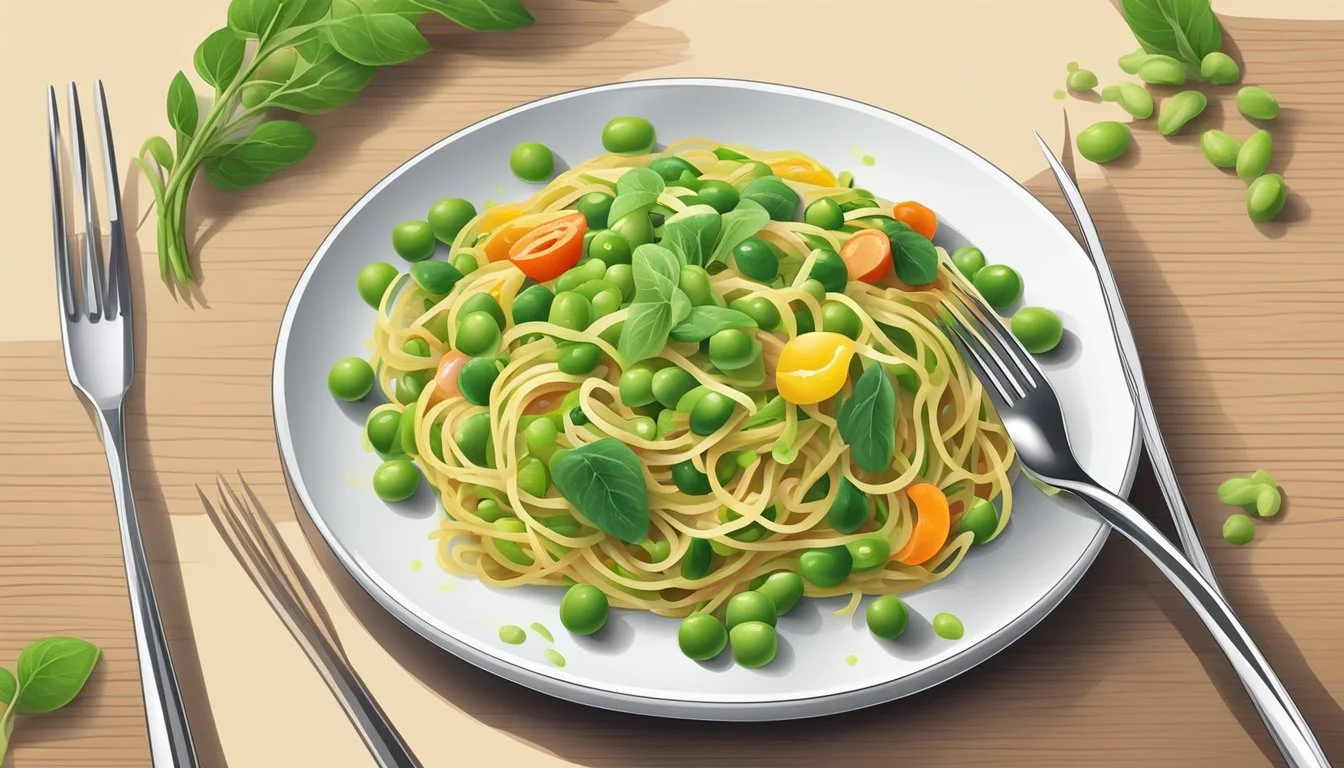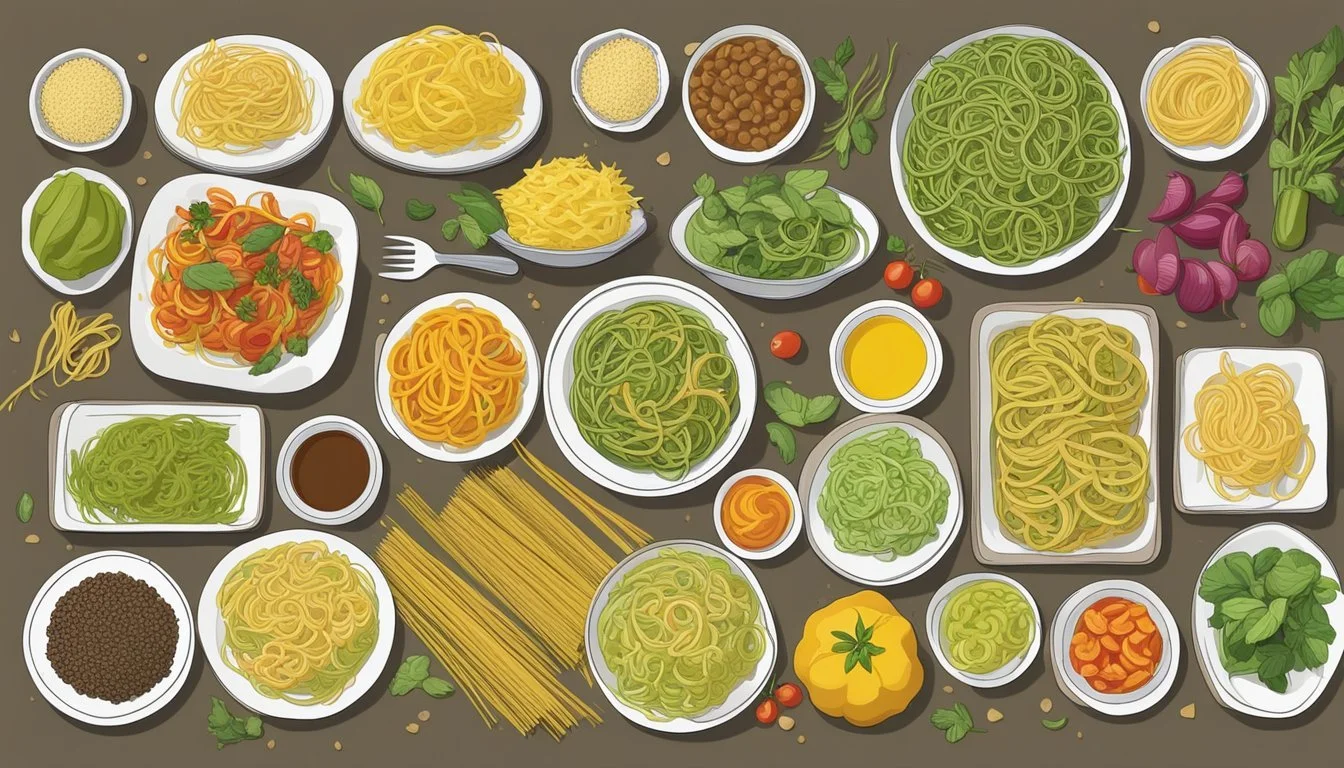6 Healthy Pasta Alternatives for Diabetics
Nutritious and Delicious Options
Navigating a diabetic-friendly diet can be challenging, especially when it comes to beloved staples like pasta. Many traditional pasta options are high in carbohydrates, which can spike blood sugar levels. Finding suitable pasta alternatives can be a game-changer for those managing diabetes without giving up the comfort of this versatile dish.
There are various carbohydrate-conscious pasta substitutes designed to mimic the taste and texture of regular pasta, while being gentler on the glycemic index. These alternatives empower individuals with dietary restrictions to enjoy their meals without compromising their health goals.
1) Zoodles (zucchini noodles)
Zoodles, or zucchini noodles, are a versatile and popular alternative to traditional pasta. Made by spiralizing fresh zucchini, they offer a refreshing, low-carb option suitable for those managing diabetes.
A medium zucchini has just 33 calories and 6.9 grams of carbs. This makes zoodles an excellent choice for creating larger portions without adding many calories or carbohydrates.
Zoodles can be paired with a variety of sauces and toppings. They work well with olive oil, garlic, and additional vegetables. For added protein, consider incorporating lean meats or plant-based proteins.
One cup of zoodles contains 4 grams of carbs, 0 grams of fiber, and 1 gram of protein. This nutritional profile helps in managing blood sugar levels effectively.
For best results, zoodles should be cooked lightly. This maintains their texture and nutrients. Overcooking can leave them mushy and less appealing.
Zoodles are also incredibly easy to prepare. A spiralizer or even a simple julienne peeler can quickly turn zucchini into pasta-like strands ready for cooking and eating.
2) Shirataki Noodles
Shirataki noodles, often called "Miracle Noodles," are a popular low-carb pasta alternative that suits diabetics well. Made from glucomannan, a type of fiber derived from the konjac yam, these noodles have an almost negligible impact on blood sugar levels.
The preparation of shirataki noodles is straightforward. First, drain and rinse the noodles under cold water for about two minutes. Then, boil them for three minutes to remove the distinctive odor.
Once boiled, the noodles should be patted dry with a paper towel. Shirataki noodles have a slightly chewy texture and a neutral taste, making them versatile for various dishes. They work well in stir-fries, soups, and pasta salads.
With zero grams of carbohydrates and calories per serving, shirataki noodles are an excellent choice for those managing diabetes. They allow for flavorful, satisfying meals without the concern of spiking blood sugar levels.
Shirataki noodles can be found in most grocery stores, either in the refrigerated section or in the Asian foods aisle. They are also widely available through online retailers, making them accessible for everyone looking to maintain a healthy diet.
3) Spaghetti Squash
Spaghetti squash is an excellent alternative for traditional pasta, particularly for individuals with diabetes. It offers a lower carbohydrate content and a unique texture that mimics spaghetti noodles.
One of the main benefits of spaghetti squash is its low caloric content. This makes it a valuable option for those managing their weight and blood sugar levels.
With only about 10 grams of carbohydrates per cup, spaghetti squash is significantly lower in carbs compared to regular pasta. This helps in maintaining stable blood sugar levels.
The squash is also rich in vitamins and minerals, including vitamin A, vitamin C, and potassium. These nutrients contribute to overall health and well-being.
Cooking spaghetti squash is simple. Halve the squash, remove the seeds, and bake or microwave it. Once cooked, the flesh can be easily shredded into spaghetti-like strands.
Spaghetti squash pairs well with various sauces and toppings. It can be used in dishes ranging from traditional marinara to Mediterranean-style recipes.
Using spaghetti squash as a substitute not only lowers carb intake but also increases vegetable consumption. This supports a balanced and nutritious diet essential for diabetes management.
4) Lentil Pasta
Lentil pasta offers a nutritious alternative for diabetics. Made from ground lentils, it maintains a higher protein and fiber content compared to traditional wheat pasta.
Rich in vitamins and minerals, lentil pasta supports overall health. The fiber helps regulate blood sugar levels by slowing down the absorption of carbohydrates.
This type of pasta also provides a satisfying texture and taste. Many people find it holds its shape well during cooking and pairs nicely with various sauces and ingredients.
Lentil pasta can be found in most grocery stores and is available in several shapes such as penne, spaghetti, and fusilli. For those managing diabetes, it can be a tasty and practical switch from traditional pasta.
5) Chickpea Pasta
Chickpea pasta is a notable and healthy alternative for diabetics. It's crafted from chickpea flour, which offers a substantial amount of protein and fiber. These nutrients play a key role in regulating blood sugar levels, making it suitable for individuals managing diabetes.
This pasta has a slightly nutty flavor, which can complement various dishes. It pairs well with both tomato-based and creamy sauces, providing versatility in meal preparation. The texture is firm and holds up well during cooking, ensuring a satisfying bite.
A significant benefit of chickpea pasta is its lower glycemic index compared to traditional pasta. Lowering the glycemic index can help minimize blood sugar spikes after meals. Additionally, chickpea pasta is gluten-free, making it an option for those with gluten sensitivities or celiac disease.
Overall, chickpea pasta is a beneficial and delicious choice for diabetics, offering both nutritional advantages and culinary flexibility.
6) Edamame Spaghetti
Edamame spaghetti is a nutritious pasta alternative suitable for diabetics. Made from organic edamame beans, it is both low-calorie and low-carbohydrate, offering approximately 180 calories and 20 grams of carbohydrates per serving.
This type of pasta is rich in protein and fiber. In fact, edamame spaghetti contains higher levels of protein compared to traditional pastas, which can aid in maintaining satiety and controlling hunger.
The high fiber content is another advantage. Fiber helps manage blood sugar levels by slowing down the digestion process and preventing rapid spikes in glucose.
Edamame spaghetti is also gluten-free, making it an option for those with gluten sensitivities or celiac disease. The preparation is similar to traditional pasta, making it an easy substitution in various recipes.
For diabetics, the combination of low carbohydrates, high protein, and high fiber makes edamame spaghetti a reliable and healthy pasta alternative.
Nutritional Benefits of Pasta Alternatives
Pasta alternatives offer numerous health advantages, particularly for individuals with diabetes. These benefits include a lower glycemic index, higher fiber content, and enhanced satiety.
Lower Glycemic Index
Many pasta alternatives, such as zucchini noodles and whole wheat pasta, have a lower glycemic index (GI) compared to traditional refined pasta. This means they cause a slower, more gradual rise in blood sugar levels. For example, whole wheat pasta has a glycemic index of 52, which is lower than the 55 GI of refined pasta.
A lower glycemic index can help manage blood sugar levels more effectively, reducing the risk of spikes. Consuming foods with a lower GI is beneficial for maintaining stable glucose levels, which is crucial for individuals with diabetes. Opting for pasta alternatives like spaghetti squash or carrot noodles can result in a more controlled post-meal blood sugar response.
Higher Fiber Content
Pasta alternatives are often higher in fiber, contributing to various health benefits. Whole wheat pasta, for instance, contains almost three times the fiber of regular pasta. Increased fiber intake enhances digestion and promotes more stable blood sugar levels. Fiber also helps reduce cholesterol levels and supports heart health.
Vegetable-based noodles, such as those made from zucchini or carrots, are naturally high in fiber. This added fiber can make meals more satisfying and delay the absorption of sugars, which is particularly beneficial for diabetics. Including fiber-rich pasta alternatives in your diet can support digestive health and help in long-term blood sugar management.
Enhanced Satiety
One of the key advantages of pasta alternatives is their ability to enhance satiety. Foods rich in fiber and lower in calories can help people feel fuller for longer periods. For example, a cup of cooked spaghetti squash has only 42 calories and 10 grams of carbs, making it a filling yet low-calorie option.
This enhanced satiety helps reduce overall calorie intake, which can be advantageous for weight management. A healthier body weight is often associated with improved blood sugar control. Carrot noodles and other vegetable spirals offer bulk to meals without adding excessive calories or carbohydrates, aiding in appetite control and contributing to a balanced diabetic-friendly diet.
Impact on Blood Sugar Levels
Healthy pasta alternatives can significantly influence blood sugar levels by providing lower glycemic index options and increasing dietary fiber intake.
Comparative Studies
Various studies have shown that pasta made from whole grains, vegetables, or legumes tends to have a lower glycemic index compared to traditional white pasta. For example, whole wheat pasta has a glycemic index of about 52, which is lower than refined flour pasta's 55. The high fiber content in whole grain and vegetable-based pastas helps slow the absorption of carbohydrates, leading to more stable blood sugar levels.
Alternatives such as lentil and chickpea pasta also provide higher protein and fiber content, further minimizing blood sugar spikes. In comparison, shirataki noodles, which contain zero carbs, are found to have no significant impact on blood sugar levels, making them an excellent option for diabetics.
Long-term Benefits
Incorporating these pasta alternatives into a regular diet can offer several long-term benefits. Consistent intake of low glycemic index foods helps maintain better blood sugar control, reducing the risk of complications associated with diabetes. Increased dietary fiber contributes to improved digestive health and can aid in weight management, which is crucial for diabetic care.
Using plant-based pastas rich in protein and fiber may also enhance overall nutritional intake, supporting long-term health goals. Regular consumption of these healthier pasta options can lead to improved metabolic health markers, such as lower HbA1c levels and better insulin sensitivity.
Carefully balancing meals with lean proteins and non-starchy vegetables alongside these pasta alternatives can further enhance these benefits.
How to Incorporate Pasta Alternatives Into Your Diet
Incorporating pasta alternatives can aid in managing diabetes by lowering carb intake and providing essential nutrients. The key lies in thoughtful meal planning and mastering specific cooking techniques.
Meal Planning Tips
When planning meals, consider the carbohydrate content and nutritional value of pasta alternatives such as zucchini noodles, butternut squash spirals, and chickpea pasta. These alternatives can be paired with lean proteins such as chicken or tofu and a variety of non-starchy vegetables.
A balanced meal includes a variety of textures and flavors. For example, pair edamame pasta with a light garlic sauce, cherry tomatoes, and grilled shrimp. This not only supports a ketogenic or low-carb diet but also adds plenty of vital vitamins and minerals.
A weekly meal plan helps in buying the necessary ingredients and reduces the temptation to reach for high-carb options. Keeping a variety of pasta alternatives on hand increases the likelihood of incorporating them into meals consistently.
Cooking Techniques
Understanding how to cook pasta alternatives ensures they retain their nutritional value and taste. For vegetable noodles, minimal cooking is key. Lightly sautéing zucchini or cucumber noodles for one to two minutes retains their crunch and nutrients. Overcooking can make them watery and less appealing.
Chickpea and edamame pastas cook similarly to traditional pasta but may require a few minutes less. To avoid mushiness, check frequently for the desired texture. Draining and rinsing with cold water can stop the cooking process.
Pairing these with the right sauces and seasonings is crucial. Light, oil-based sauces like pesto or a garlic-olive oil blend work well with most alternatives. For added protein, consider tossing in a handful of nuts or seeds.





